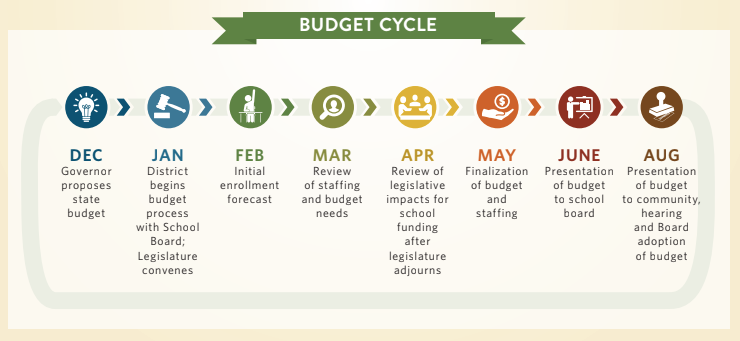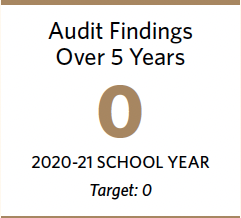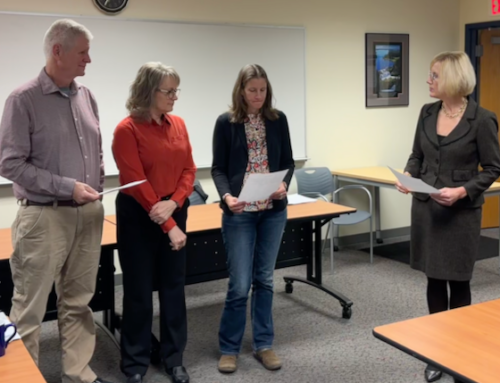As we plan for the coming school year, we need to make some staffing adjustments to balance student and teacher ratios and adjust to program needs and goals. District administration shares information about this process with the school board starting in January each year, as part of the budget development process.

“We are thankful that everyone on our team has a job,” said Superintendent Dr. Mary Templeton. “This requires forward thinking, planning, and flexibility from the entire Washougal team. The fact that we’re the largest employer in Washougal means that many people are counting on us. We’re grateful that we’re not in the same position as other districts around the state, where they’re having to let folks know they don’t have a position in the next year. Thankfully, that’s not us.”
The district is working closely with staff as we make adjustments. Templeton added that, “We value our employees and we are investing in staff development to make sure we have highly trained staff in every classroom. We have been successful in attracting, retaining and supporting effective educators. The annual staffing process does require flexibility from our staff, and creativity in how we approach supporting students and at the same time eliminate deficit spending.”
Assistant Superintendent for Human Resources and Student Services Aaron Hansen said, “As we shared with the board, this is the usual process we run this time of year. We are grateful to have positions for all of our permanent staff in the next school year. This is not the reality for many districts in our region and around the state. We are working closely with staff impacted by any needed changes, and have let them know as early as we can, so they can plan for the coming year. We have not yet completed the process, and our goal is to make sure staff know their assignment before they leave for the summer.”
Director of Business and Operations Kris Grindy said, “We have been working throughout the year to find efficiencies and engaged in belt-tightening to make sure we are being good stewards of the public dollar. We have a solid plan, and we are building the budget to support the important work we want to continue into the next year. We monitor our financial position and enrollment monthly, and this is shared with the school board to start making real-time adjustments to spending and budget. The same information shared with the board is available to the public via

BoardDocs, and community members with questions can contact us to learn more about the process.”
Hansen added, “Since we are still working through this process, and staff are still letting us know if they’ve made a different decision for next year, we don’t have a total number of staff impacted. This set of adjustments helps us keep consistent class and program sizes around the district, and focuses our resources on programs that are making the most impact for students. We are also making adjustments that honor the student, family, staff, and community input received on the budget priorities survey in February. We are also making adjustments to administrative spending and prioritizing staffing adjustments furthest from the classroom.”
Grindy noted that, “the budget for the current 2022-2023 school year relied on deficit spending of around $600,000. As the cost of goods, services, and our staff expenses increase well above funding received by the state, we must make adjustments to live within our means while continuing to honor our obligations and staffing contracts. As good stewards of public resources, we are working closely with our labor partners to make adjustments to produce a more balanced budget.”
“We are closely following the applicable sections of our bargaining agreement, and working through the changes needed,” said Hansen. “This does require us to have some flexibility from our staff for all permanent staff to be able to continue working for us next year. Like we do each year, when adjusting staffing, we work closely with our labor partners to communicate the district’s program goals and financial position.”
“As we have shared before, we have fewer students entering each year than graduate,” shared Grindy. “Washougal experienced a significant growth in enrollment when families moved into the Sunset Ridge neighborhood in the early 2000s. As the last of that large wave of students graduates, our enrollment is projected to decline over the next four to five years. We will continue to monitor and adjust to any changes caused by new development, but at this point, we need to adjust staffing to match the enrollment trend, which has us down about 10% since 2018.”
“Taxpayers are counting on us to prepare budgets that are balanced, and we’ve been steadily adjusting to the new reality of our student enrollment trends,” said Templeton. “The current budget continues this process, while ensuring we have highly trained teachers and staff, excellent programs, innovative instruction, and well-maintained and safe facilities. As we make these adjustments, we are not skimping on student achievement, and focusing our resources on things that will help students reach their bright futures.”






